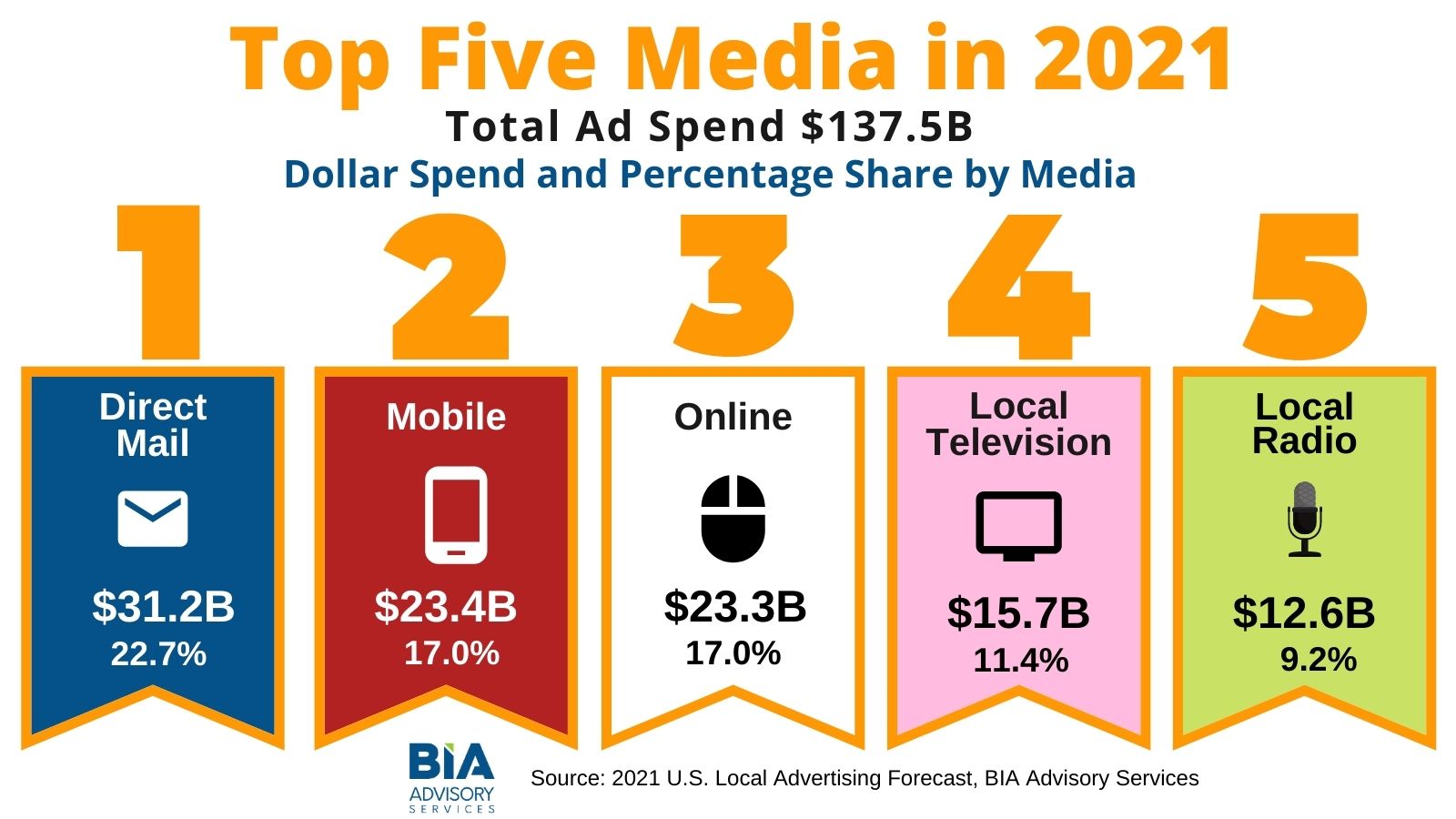What Will TV Look Like in 2021?
In 2020, television cemented its role as the arbiter of the national mood. Will that mood turn to hope in 2021?

SAN FRANCISCO—It’s impossible to look forward at the state of the media and entertainment media industry without taking a glance backward at the past year. And that view is one littered with debris: shutdowns, layoffs, regulatory stalemates, cancellations.
It’s been a year of stops, starts, overhauls and renovations. But also hope and a reaffirming of what many have known for some time: Viewers are not only clamoring for more content, they also recognize that broadcast television remains a steady force when it comes to news in the midst of a crisis.
‘INTRINSIC VALUE’
“I believe the pandemic has confirmed and underscored the intrinsic value of traditional broadcast television and radio,” said Adonis Hoffman, CEO of The Advisory Counsel, LLC, a D.C.-based law firm. “We cannot even begin to count the number of messages, programs and the type of content that was devoted to information, education, coverage of the pandemic.”
The head of the nation’s primary broadcasting association agreed. “I believe the past few months have served as a reminder to viewers about the enduring value of local broadcast TV,” said Gordon Smith, president and CEO of the National Association of Broadcasters. “From the pandemic to West Coast wildfires, nationwide protests about racial inequity to the 2020 elections, we have witnessed many historic newsworthy events over the last nine months that led to increased viewership of broadcast television.”
In early March, the industry got a clear-eyed view of the extent to which the coronavirus pandemic impact would have when the NAB Show announced it was canceling the in-person portion of the 2020 annual Las Vegas gathering. The organization has canceled the show only one other time, during World War II.
As the largest show in the industry, the annual NAB Show is a significant money maker for the association. In 2019, the show brought in revenue of $46 million as well as 90,000 visitors and more than 1,600 exhibitors. In an interview in March, Smith called cancellation of the 2020 show an “agonizing” decision. It not only impacted the 90,000 individuals that were expected to attend but cost untold amounts in missed networking connections—a vital reason why many in the industry attend the show in the first place.
The organization scrapped calls to reschedule the convention for later in the year and instead put together an all-virtual event, the “NAB Show Express.” Looking ahead to 2021, NAB said more than 540 companies have contracted to exhibit at the NAB Show when it returns to Las Vegas, Oct. 9–13, 2021.
Get the TV Tech Newsletter
The professional video industry's #1 source for news, trends and product and tech information. Sign up below.
THE BOTTOM LINE
Entering a new year, it’s become clearer how significant an impact the coronavirus has had on the media business, be that on television, radio or streaming.

“[The pandemic has had] an incredible impact on both TV and radio,” said Mark Fratrik, senior vice president and chief economist for BIA Kelsey. “Many different verticals have decreased their advertising spending by a considerable amount. Of course, the amazing amount of political advertising mitigated some of that. But many different leisure and entertainment verticals, e.g. movies, basically stopped advertising or cut back severely.”
According to an estimate by the research firm IBISWorld, M&E is forecast to see a decline of 6.7% due to halted content production. Growth that had been seen over the last few years—as broadcasters began shifting into digital distribution—bolstered revenue. But the coronavirus offset these trends, which led to a decrease in total ad spending in 2020 and halted production of new TV content for a time.
Nowhere was this felt more perhaps than in live sports. Ads run during National Football League games are typically the most expensive in the market due to their large audience share. But viewership dropped as the pandemic caused cancellations or postponements. According to The Wall Street Journal, a drop in ratings for the NFL led advertisers to drop advertising prices in 2020, an unheard of occurrence.
The NFL responded by negotiating to get the NFL Network on a larger array of OTT platforms this year, including YouTubeTV, Vidgo and fuboTV and making it available on smart TVs such as VIZIO’s SmartCast, which last month launched an exclusive specialty "NFL Channel."
2021 A TRANSITION YEAR?
Yet even without the annual convention and in the midst of a pandemic, progress across the industry has continued in several ways. Or as BIA Kelsey’s Fratrik said: “It will take some time for local TV to come back but by 2022, it should.”
ATSC—which marked 2020 with the launch of consumer sets and station deployments— said that while many stations in the top 40 markets would deploy NextGen TV to viewers by the end of 2020, it revised that mile marker slightly to mid-2021. Deployments picked up steam by the end of the year though, with five markets launching in December alone, including its two largest markets, Seattle and Detroit.
“I think we will continue to see the steady drumbeat of local TV stations launching NextGen TV service in markets across the country,” NAB's Smith predicted. ATSC has said that it expects NextGen TV to be deployed in more than 60 markets representing 70 percent of viewers by the middle of this year.
Another bright spot came from the influx of political advertising dollars spent.
Although local TV stations continue to feel the effect of new competition in both attracting audiences and in selling advertising, “the amazing amount of political advertising spent in 2020—and continuing until Jan. 5 in Georgia—shows the importance of local television in the local advertising marketplace,” Fratrik said.
Other bright spots on the horizon include the rescheduled XXXII Summer Games to be held in July and August of 2021 in Tokyo. In 2011, NBC agreed to a $4.38 billion contract with the International Olympic Committee to broadcast the Olympic Games through the 2020 Summer Olympics, giving NBC rights to all media platforms including TV, internet and mobile. NBC and the IOC also agreed to a $7.75 billion extension to air the Olympics through the 2032 games. A recent article in Forbes reported that NBC had sold more than $1.25 billion in advertising for this year’s games, accounting for nearly 90 percent of the available ad space.
That’s not to say there hasn’t been fallout. A study reported in Japan Times projected that postponing the games was predicted to reduce Japan’s annual gross domestic product by ¥7.8 trillion (USD $75 billion).
THE STRENGTH OF STREAMING
While the lack of such high-profile programming in 2020 was a significant downside, it’s hard to put a number on it, Fratrik said, as the U.S. economy was already in a downward slide and advertising plummeted in the early months. “Overall several billions of dollars were not spent by national and local advertisers as a result of the pandemic and the economic downfall and the lack of the Olympics,” he said.
What has remained strong throughout 2020: direct-to-consumer streaming. Nielsen went so far as to say that the pandemic catapulted streaming to serve as the present—and perhaps the future—of content consumption. According to the August 2020 Nielsen Total Audience Report, streaming among OTT-capable homes accounted for 25% of the time that consumers spent watching TV.

Legacy broadcasting companies are going all-in with streaming, perhaps best marked by the launch of VUit, a new OTT app developed by Syncbak, which aggregates local programming. Backed by Gray TV, Raycom and ViacomCBS, among others, the new service, which debuted in September, touts itself as the “Netflix of Live, Local and Free.”
“Large TV groups such as Tegna, Sinclair and Gray are heavily involved in providing local streaming services and selling advertising on those platforms,” Fratrik added.
Another way to put it: “The media industry is surprisingly optimistic given the totality of 2020 events,” said Josh Steinhour, an analyst with the research firm Devoncroft Partners “This is perhaps due to the near singular fascination of the industry and investor communities with direct-to-consumer subscriber counts.”
According to the Nielsen report, streaming comprised one-fourth of all television minutes viewed, led by Netflix, YouTube, Hulu, Amazon and Disney+. Nielsen also found that the pandemic is having a significant impact on news consumption. “As consumers are spending more time at home and in their local communities, the pandemic is causing a spike in local news reliance and consumption,” Nielsen said.
According to Peter Katsingris, senior vice president of Audience Insights at Nielsen, local news providers are showing they are dialed in to this new way that consumers are consuming news, and local news has responded by reaching consumers in an effective way.
“When it comes to the consumption of local news, we asked [in the survey] about genres of what they watched during the day [and] news was the top genre,” he said. “Local news is something that is really hitting home for… people who are impacted and working from home. They’re home and really [want to] have up-to-the minute information on what’s going on.”
Not surprisingly TV viewing soared in 2020. The October 2020 Nielsen Local Watch Report revealed overall weekly news viewing is up nearly one hour and 20 minutes when compared to September 2019. And the demographic of those who are watching is changing as well with news viewing by younger audiences aged 18–34 increasing by 134% from 2019 to 2020.
A report from the firm Research and Markets found that the M&E market is expected to stabilize and reach $133.7 billion at a compound annual growth rate of 5.5% through 2023.
‘TIL WE MEET AGAIN
What else lies ahead? The makeup of trade shows is certain to change, Steinhour said. “To my knowledge there is no data set in existence describing a negative impact to the industry from the lack of trade events in 2020,” he said. “We need global events to bring together the industry community. I do not claim to have the answer for how trade events will evolve, but I can say with confidence future shows will not resemble the 2019 vintage.”
What the industry should look at now involves action outside of the U.S. According to Steinhour, several European countries have or are in the process of passing Netflix-type taxes. “These are taxes on revenue, levies, or in-country spending mandates on large, familiar U.S. digital companies,” he said. “Regardless of the structure of the tax, the intention is to protect local content production. This will happen everywhere.”
Others point to the ongoing importance of improving diversity in the broadcast world and embracing the rollout of ATSC 3.0.
And others, including the NAB’s Smith, said that the most important thing broadcasters can do is to meet with their legislators and explain how legislation, regulatory actions and judicial decisions affect the day-to-day operations of stations. “Members of Congress are aware of the influence local broadcasters have in their communities, and they want to hear from them,” he said.
Fratrik added that all broadcasters need to remain aware of their local economic conditions as we head into 2021. “There is wide variation among the states as to the severity of the lockdowns, the impacts on employment, and thus, the level of advertising being spent,” he said. “There is significant hope that the distribution of the vaccine will lead to more states opening up. Local broadcasters need to monitor those events and plan accordingly.”
Susan Ashworth is the former editor of TV Technology. In addition to her work covering the broadcast television industry, she has served as editor of two housing finance magazines and written about topics as varied as education, radio, chess, music and sports. Outside of her life as a writer, she recently served as president of a local nonprofit organization supporting girls in baseball.

